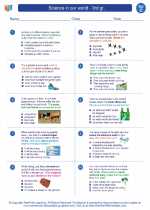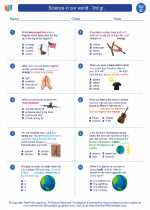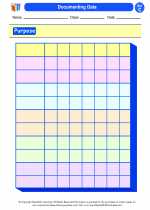Volcanoes
A volcano is a mountain that opens downward to a reservoir of molten rock below the surface of the Earth. When pressure builds up, eruptions occur. Gases and rock shoot up through the opening and spill over or fill the air with lava fragments. Eruptions can cause lava flows, hot ash flows, mudslides, and avalanches.
Types of Volcanoes
There are different types of volcanoes including:
- Shield Volcanoes: These have broad, gently sloping sides and are formed by the eruption of low-viscosity lava that can flow a great distance from the vent.
- Stratovolcanoes (Composite Volcanoes): These are built up over time by the slow eruption of lava, ash, and rock. They are characterized by a steep profile and periodic explosive eruptions.
- Cinder Cone Volcanoes: These are the simplest type of volcano. They are built from particles and blobs of congealed lava ejected from a single vent.
Volcanic Eruptions
Volcanic eruptions can have various impacts on the environment and human settlements. These impacts include:
- Lava Flows: Lava flows can destroy everything in their path, including buildings and vegetation.
- Ash Fall: Ash can cover large areas and disrupt transportation, agriculture, and water supplies.
- Pyroclastic Flows: These are high-speed avalanches of hot ash, rock fragments, and gas. They are extremely dangerous and can travel down the slopes of a volcano at speeds exceeding 100 km/h.
Volcano Study Guide
Here are some key points to remember about volcanoes:
- What is a volcano?
- What are the three main types of volcanoes?
- What are the different impacts of volcanic eruptions?
- What are the safety measures to take in the event of a volcanic eruption?
- Research and identify some famous volcanoes around the world and their eruption histories.
Remember, always be cautious and stay informed about volcanic activity in your region!
[Volcanoes] Related Worksheets and Study Guides:
.◂Science Worksheets and Study Guides Third Grade. Science in our world - 3rd gr.
Study Guide Science in our world - 3rd gr.
Science in our world - 3rd gr.  Worksheet/Answer key
Worksheet/Answer key Science in our world - 3rd gr.
Science in our world - 3rd gr.  Worksheet/Answer key
Worksheet/Answer key Science in our world - 3rd gr.
Science in our world - 3rd gr.  Worksheet/Answer key
Worksheet/Answer key Science in our world - 3rd gr.
Science in our world - 3rd gr.  Worksheet/Answer key
Worksheet/Answer key Documenting Data
Documenting Data 

 Worksheet/Answer key
Worksheet/Answer key
 Worksheet/Answer key
Worksheet/Answer key
 Worksheet/Answer key
Worksheet/Answer key
 Worksheet/Answer key
Worksheet/Answer key

The resources above cover the following skills:
History and Nature of Science: A student should understand the history and nature of science. A student who meets the content standard should:
Develop an understanding that historical perspectives of scientific explanations demonstrate that scientific knowledge changes over time, building on prior knowledge.
Develop an understanding that scientific knowledge is ongoing and subject to change as new evidence becomes available through experimental and/or observational confirmation(s).